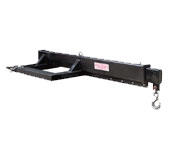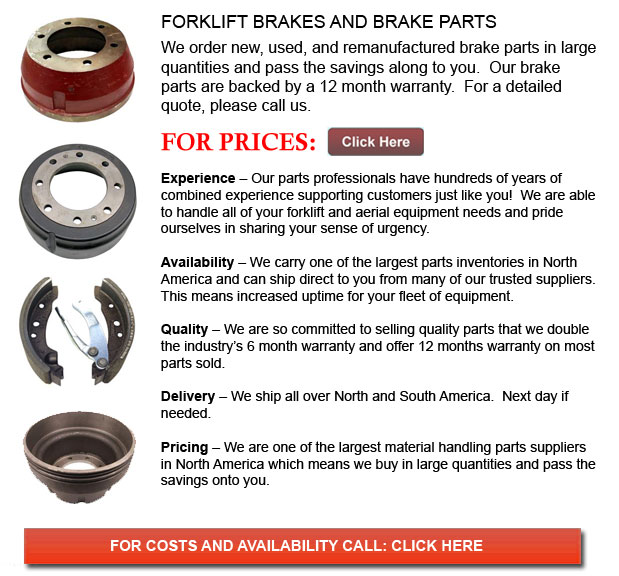
Forklift Brakes - A brake drum is in which the friction is provided by the brake pads or brake shoes. The pads or shoes press up against the rotating brake drum. There are some other brake drums types along with particular specific differences. A "break drum" would normally refer to when either shoes or pads press onto the interior surface of the drum. A "clasp brake" is the term used so as to describe if shoes press against the outside of the drum. Another type of brake, called a "band brake" uses a flexible belt or band to wrap round the outside of the drum. Where the drum is pinched in between two shoes, it can be known as a "pinch brake drum." Similar to a standard disc brake, these types of brakes are somewhat uncommon.
Prior to nineteen ninety five, early brake drums required constant adjustment regularly so as to compensate for shoe and drum wear. Long brake pedal or "Low pedal" travel is the dangerous end result if adjustments are not done sufficiently. The vehicle can become dangerous and the brakes can become useless when low pedal is combined along with brake fade.
There are some various Self-Adjusting systems used for braking existing nowadays. They can be classed into two separate categories, the RAD and RAI. RAI systems are built-in systems which help the tool recover from overheating. The most recognized RAI makers are Lucas, Bosch, AP and Bendix. The most well-known RAD systems comprise AP, Bendix, Ford recovery systems and Volkswagen, VAG.
Self-adjusting brakes generally make use of a device which engages just when the vehicle is being stopped from reverse motion. This stopping method is acceptable for use where all wheels make use of brake drums. Most vehicles nowadays utilize disc brakes on the front wheels. By operating only in reverse it is less likely that the brakes will be adjusted while hot and the brake drums are expanded. If tweaked while hot, "dragging brakes" can occur, which raises fuel consumption and accelerates wear. A ratchet tool that becomes engaged as the hand brake is set is another way the self repositioning brakes can operate. This means is only suitable in applications where rear brake drums are utilized. Whenever the emergency or parking brake actuator lever goes over a certain amount of travel, the ratchet developments an adjuster screw and the brake shoes move in the direction of the drum.
There is a manual adjustment knob placed at the bottom of the drum. It is usually adjusted through a hole on the opposite side of the wheel and this involves getting beneath the vehicle together with a flathead screwdriver. It is of utmost importance to move the click wheel properly and adjust each wheel equally. If unequal adjustment occurs, the vehicle can pull to one side during heavy braking. The most effective way to be able to make sure this tedious job is completed safely is to either lift each and every wheel off the ground and hand spin it while measuring how much force it takes and feeling if the shoes are dragging, or give every\each and every one the same amount of clicks utilizing the hand and then do a road test.
![]() Click to Download the pdf
Click to Download the pdf
Forklift Parts








Lift Parts Express
TOLL FREE: 1-888-695-7994
Louisville, Kentucky
forkliftpartslouisville.com
Email Us
About Us



